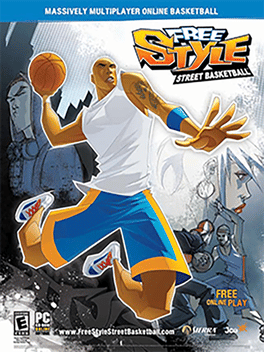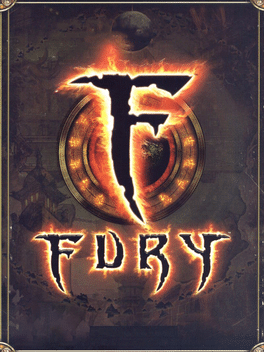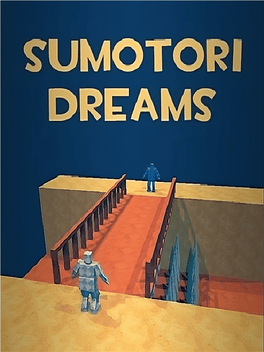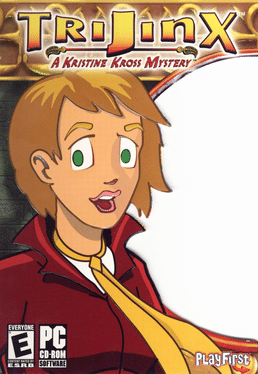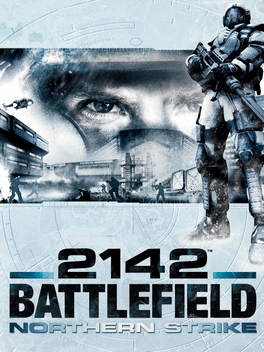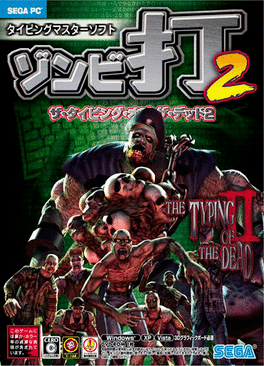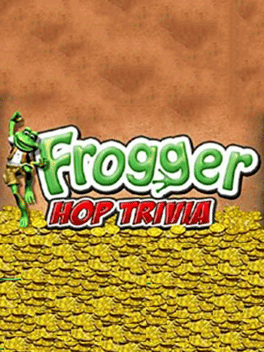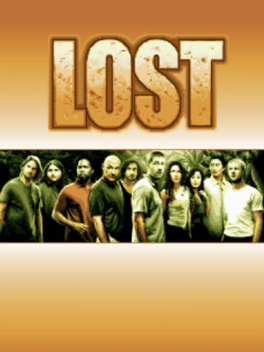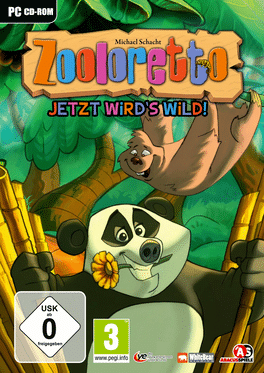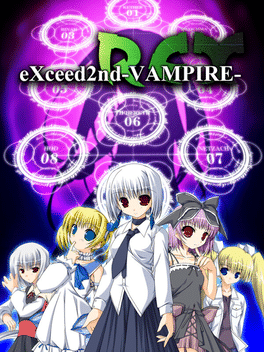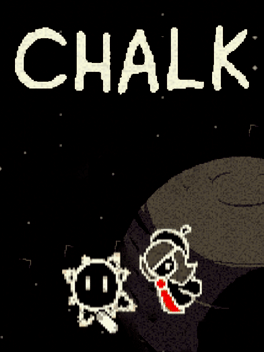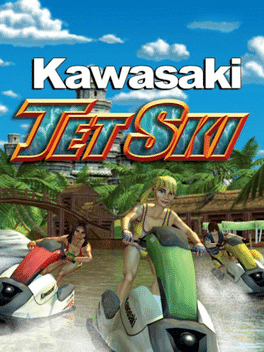New Games - Page 10032
-
Sid Meier's Civilization IV: Gold Edition
2007
star 8.6This release includes: - Civilization IV - Civilization IV: Warlords - An exclusive fantasy-style poster from world-famous artist Greg Hildebrandt - Behind-the-scenes DVD with developer interviews - Tech-tree poster - Civilization IV game manual -
FreeStyle Street Basketball
2007
star 5FreeStyle Street Basketball (FSSB) is a massively multiplayer online sports game made by JC Entertainment and with cel-shaded graphics. It is a fast paced, arcade styled representation of half court streetball, self-described as being Hip-Hoop. Players team up with one another to challenge other online players to matches of basketball that are characterized by high tempo, freedom of movement, and a premium placed on synergy and teamwork. Players can also create clubs and enter club matches, play in a single player story mode, roam around in Open Court mode, drop and add skills as needed, and choose from millions of different outfits to express themselves due to the sheer quantity of wearable items in the ingame shop. -
Fury
2007
Fury
2007
star 5Fury was a game billed as an Arena-based PvP MMO without PvE content. Players engaged in combat as groups or as individuals in 3 different war zone game types: Bloodbath (everybody vs everybody), Vortex (team based capture the flag variant), Elimination (team based elimination best out of 3). A fourth game type, Fortress (large scale fortress sieges), was being developed but never finished. Players progressed in ranks, won equipment, and bought skills and abilities which they used to build their character in a completely free-form skill-based system. You could save your equipment and ability layout as an "incarnation" and switch incarnation between war zones. There was no specific player 'class' as in other MMOs nor did you need to have alternate characters to explore other character aspects as you could just rebuild a different incarnation of yourself. -
Sumotori Dreams
2007
Sumotori Dreams
2007
star 6.6According to the website where it is located, Sumotori Dreams is: A little but very serious ragdoll game in small size. This is the game where beginners can beat hardcore players. -
Hot Dog King
2007
Hot Dog King
2007
star 3Every aspect of running a small Hot Dog stand (and ultimately a thriving empire) is incorporated into this light-hearted simulation. Design your stores based on what your customers tell you they like. Staff relations play a big role in the game. Each potential employee has their own personality, and can be offered gifts, improved training and vacation time, all of which will have an affect on the quality of their work. Designing the staff costume also has a big effect on how marketable your store is. It's not always peaceful work; you will face robberies, infestations of viruses, and even aliens. A boxing mini-game sees you deal with angry customers, while you can run your company outside of the law, with the help of the Mafia for espionage and intimidation. -
TriJinx: A Kristine Kross Mystery
2007
Welcome to the world of TriJinx – an action-puzzle with a tumbling twist! TriJinx combines classic gameplay mechanics with an elegant and dynamic rotating game board, evoking the hypnotic charm of Tetris or Collapse but adding action, speed and dynamic beauty. Enter this rotational riddle and you will find yourself immersed in an intriguing story as well! -
SingStar: Cantautori Italiani
2007
The most beautiful voices of the most famous Italian artists in the new and even richer episode of the SingStar franchise. A version with the greatest Italian hits to satisfy the tastes of all fans of the brand. With the signatures of veterans like Antonello Venditti, Claudio Baglioni, Eros Ramazzotti, Gianna Nannini and Biagio Antonacci. -
Battlefield 2142: Northern Strike
2007
star 7.1Northern Strike is the first expansion pack to Dice's Battlefield 2142, adding new maps, vehicles and weapons. -
Critter Crunch
2007
Critter Crunch
2007
star 8.5Critter Crunch is an award winning, arcade-style puzzle game, starring the loveable Biggs. Using his long, sticky tongue to grab critters from vines above, he feeds them to each other until they burst, dropping tasty jewels for him to gobble up. Using Critter Crunch's 'Food Chain' mechanic, players will eat their way through a smorgasbord of levels and gorge on a feast of modes, including Co-op and Versus multiplayer. Oh, and barf. Rainbow barf! -
The Typing of the Dead 2
2007
The Typing of the Dead 2, the sequel game to The Typing of the Dead, is an arcade game (ported to Microsoft Windows). It was released in arcades in 2007. This version was a revision of The House of the Dead III, and has only been released in Japan and only for PC as of 2008. While the latter is a standard light gun shooter, Typing replaces the gun with the keyboard. The game is an educational game, as it requires players to enhance their typing skills to be successful. The plot centers around the elimination of the zombie threat after society has collapsed. -
Frogger Hop Trivia
2007
Frogger Hop Trivia
2007
Frogger Hop Trivia is an action-adventure game developed and published by Konami and released in 2007 on Arcade platforms. -
Google Earth Flight Simulator
2007
The Google Earth flight simulator is a flight simulator that uses Google Earth satellite images as the ground for a more realistic experience. Depending on the system, it can be accessed by pressing Control+Alt+A, Control+A, or Command+Option+A then pressing enter. After this feature has been activated at least once it appears under the tools menu. Since v4.3, the option is no longer hidden by default. Currently, only the F-16 Fighting Falcon and the Cirrus SR-22 are the only aircraft that can be used, in addition to quite a few airports. -
Lost
2007
-
Space Impact: Kappa Base
2007
The player has the ability to freely move horizontally and vertically (with a few exceptions on some platform-like levels in Space Impact Plus) but can not increase the speed of the screen's auto-scrolling feature. Powerups can be picked up while going through the levels (such as missiles, bombs, and energy beams) and the player can use them when the regular projectiles are of little effect against the enemy. As each level is played, various enemy ships confront the player, some of them following strict paths, others following the ship itself and others shooting it (with the latest games the player can encounter sub-bosses midway through the level too). After losing all lives, the player is awarded a score and depending on how many enemies killed, how many powerups picked and how many levels the player passed, that score can be placed on the Top Scores page in the game's menu. -
Zooloretto
2007
Zooloretto
2007
star 5In this addictive adaption of the award winning original boardgame, you will travel around the globe to save the inhabitants from their abusive Zoo owners. Winning the Zooloretto game against 36 unique opponents will achieve your quest. The game follows the rules of the board game but adds the strengths of a computer game to it. -
eXceed 2nd: Vampire REX
2007
star 5.8The human powers-that-be called for the purification of mankind and the eradication of vampires and ‘deviants bloodlines’ – those born of a mix of human and vampire. And so began massive purges of the deviants that were reminiscent of the “witch hunts” of centuries earlier. Leading the genocide was the exorcist corps the “Gun Bullet Children”. As the overwhelmingly large human armies began to obliterate every vampire and deviant community across the world, the opposing deviant armies sought to gather allies and rally back. Lia Fyle is a half-human, half-vampire girl fighting on the side of the deviants as they embark upon a turnaround strategy, the “Siege on the Holy Land’. Their plan: to lay siege upon the humans’ “Holy Land” and to destroy the Holy Lady Anhel who was the source of the human military power. This is a battle in which defeat is an option for neither army. Featuring an addictive dual-polarity gameplay system, this amazing vertical shmup is sure to please any shooter fan. The -
Chalk
2007
Chalk
2007
Chalk is all about drawing your way to all the glory. Draw lines across shapes to destroy them, turn back bullets at enemies and thwart huge boss enemies by bouncing stuff back in their faces. It's an arcade-game sized outing with the simple approach of a chalkboard. -
Blighted Isle
2007
-
Adventurer's Consumer Guide
2007
Ever wondered where the items of videogames come from? After this (literally) experimental text adventure you know. -
Kawasaki Jet Ski
2007
Kawasaki Jet Ski
2007
star 3It's time to get your feet wet. Choose your character, jump aboard your Jet Ski and rip through the waves to the finish line. In this Kawasaki officially licensed game you get to race around scenic water way locations such as The Thames in London, the Canadian Rockies, through exotic islets in Taiwan, and of course the canals of Venice. There are also 8 Jet Skis to unlock as well as a few more characters, and you can even play with friends in multiplayer. There are usual racing tracks and modes such as Time Trials and Tournaments but there is also a stunt mode where you get to ride around modified layouts of the four locations and do various tricks off of ramps. This mode is also available in multiplayer mode.


